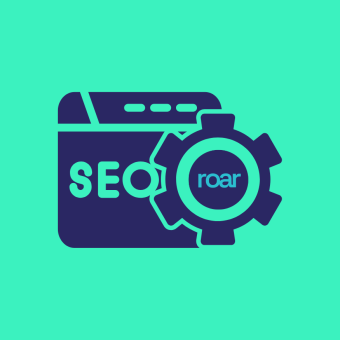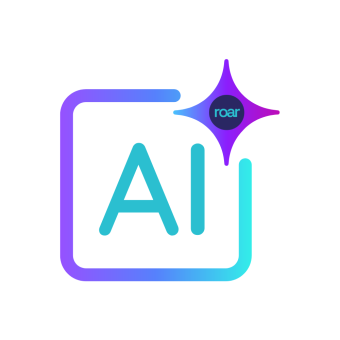Clicks without conversions mean wasted spend. This guide breaks down 9 of the most common issues holding your Google Ads back. So you can fix what’s not working and get your campaigns delivering real results.
You’re running paid search: You’ve done the research, launched the campaigns, and traffic is rolling in. But conversions are low, and the leads you’re getting aren’t turning into anything worth celebrating.
You’re not alone. We speak to plenty of marketers and in-house teams who are running decent accounts but still not seeing a return that lines up with their investment. And that’s not because Google Ads is broken. It’s because there’s often a handful of small but critical gaps in setup, strategy or optimisation that block success.
This isn’t a basic beginner’s checklist. It’s a deeper look at the technical, tactical, and behavioural pitfalls we see every week in underperforming accounts. If you’re ready to make your budget work harder, let’s get stuck in.
1. You’re targeting the wrong keywords
A lot of underperforming accounts look solid at first glance: neat structure, clean ad groups, decent CTR. But dig into the keyword strategy and there’s a mismatch between intent and targeting. That’s often where things start to fall apart.
The problem? Broad keywords or vague phrases like “marketing agency” or “CRM platform” might attract traffic, but they won’t convert if the user isn’t ready to act. At best, you’re funding research journeys. At worst, you’re just showing up in irrelevant searches and bleeding budget.
Try this:
-
Focus on high-intent commercial keywords. Terms that signal action like “buy”, “hire”, “quote”, or “compare”.
-
Layer in location or urgency where relevant (e.g. “accountant near me” or “same-day courier London”).
-
Use modified broad or phrase match to cast a smart, controlled net.
-
Regularly review your search terms report and trim the fat.
2. Your landing page doesn’t match the ad
This one’s simple but brutal. If your ad says one thing and your landing page says another, trust evaporates and users bounce. Fast.
We see it all the time: ads promising “50% off” lead to generic product pages. Campaigns for “free quotes” that land on the homepage with no form in sight. Disconnects like these kill conversions, even when your traffic is highly qualified.
Try this:
-
Match your headline and offer exactly between ad and page. If your ad says “book a free call”, your page should say the same.
-
Use dynamic keyword insertion if you’re running large-scale campaigns.
-
Remove distractions. Your landing page should do one thing well. Don’t dilute it with menus, irrelevant CTAs or cross-sell banners.
3. You’re not tracking conversions properly
If you can’t measure it, you can’t optimise it. And yet conversion tracking is still one of the most commonly missed or misconfigured elements we find in audits.
Whether it’s broken tags, misfiring triggers, or no goals set in Google Analytics, the result is the same: you’re flying blind. You can’t tell what’s working, so you can’t make data-led decisions. Worse, Google’s smart bidding can’t optimise properly either.
Try this:
-
Set up conversion tracking using Google Tag Manager for maximum control.
-
Define what counts as a conversion: form submissions, purchases, phone calls, etc. Avoid tracking vanity metrics like pageviews.
-
Link Google Ads to Google Analytics (GA4) and import goals so everything is aligned.
4. Your ad copy isn’t compelling enough
High-quality traffic won’t convert if your ad doesn’t give them a reason to click. Or worse, if it attracts the wrong kind of click entirely.
You’ve only got a few lines to grab attention and persuade someone you’re worth their time. If your ads are generic, jargon-filled, or missing a value proposition, you’ll get lost in the noise.
Try this:
-
Speak directly to the user’s problem and how you solve it. Be specific.
-
Test different CTA styles: “Book now”, “Get started”, “Free quote”, and see what resonates.
-
Use all available extensions: sitelinks, callouts, structured snippets, location. They improve CTR and qualify your audience better.
5. Your budget or bidding strategy is off
Even well-targeted campaigns can underperform if the budget or bidding model isn’t suited to your goals. If your daily budget is too low, your ads may never show during peak times. If you’re using Smart Bidding too early, it may be optimising based on poor or limited data.
The fix isn’t always to spend more, often it’s to spend more intelligently.
Try this:
-
Use manual CPC to gather initial learnings and gain control over your spend.
-
Once you have consistent conversions, test smart strategies like Target CPA or Target ROAS.
-
Make sure your budget supports your average CPC and conversion goals. Underfunded campaigns rarely deliver.
6. You’re not using negative keywords
One of the most effective ways to cut waste and lift performance is also one of the most overlooked.
Negative keywords help you filter out irrelevant searches, and without them, Google will happily show your ads to anyone vaguely related to your keyword list. That means traffic you don’t want, and clicks that don’t convert.
Try this:
-
Review your search terms report weekly and add any irrelevant queries to your negative keyword list.
-
Think about intent mismatch — if you’re selling premium software, you probably don’t want searches including “free”, “open-source” or “cheap”.
-
Build out campaign-level and ad group-level negative lists for better control.
7. Your landing page isn’t optimised for conversions
Let’s assume your targeting is spot on and your ads are compelling. If your landing page experience is poor, it’s game over.
Users will drop off if your page takes too long to load, feels confusing, or buries the action you want them to take. And in competitive sectors, you’ve got seconds to win attention.
Try this:
-
Prioritise speed. Use tools like PageSpeed Insights or GTmetrix to benchmark performance.
-
Make the page scannable. Use short paragraphs, strong headers, and visual cues.
-
Ensure there’s one clear goal: submit the form, call now, download a guide. Don’t try to do everything at once.
8. You’re relying too heavily on automation
Automation can be powerful, but only when used at the right time, with the right data.
We regularly see accounts handed over to Smart Campaigns or fully automated strategies too early. With limited historical data, poor audience signals, and no manual oversight, these setups tend to waste budget fast.
Try this:
-
Start with manual or semi-automated setups to learn what works.
-
Only shift to Smart Bidding once you have consistent conversion data.
-
Don’t “set and forget”. Monitor performance closely, especially during learning phases.
- Ask your agency these top 10 questions so you fully understand how AI and automation are being used in your account.
Thinking about switching to Performance Max?
Here’s what you should weigh up before making the jump.
9. You’re not testing or iterating enough
Campaigns aren’t static. What worked a month ago may no longer be relevant. If you’re not regularly testing and optimising, you’re leaving performance on the table.
Many accounts fail to evolve. Using the same ads, same landing pages, same bids… Even when the data suggests change is needed.
Try this:
-
Run A/B tests on ad headlines, descriptions and landing page formats.
-
Use Google’s Experiments feature to test bidding strategies or landing page variants.
-
Review performance weekly and adjust based on what the data shows.
Not sure where the problem is? Let’s take a look
Sometimes it’s one of these issues. Sometimes it’s a bit of everything, and sometimes it can be something else entirely. Either way, if your Google Ads campaigns aren’t delivering the results they should, it’s time to dig deeper.
That’s where we come in.
With a decade of experience and a team that take pride in staying ahead of the curve, your PPC campaign’s could not be in safer hands.
We’ll review your account from top to bottom. From keyword strategy and campaign structure to tracking, landing pages and bidding. Then we’ll give you clear, actionable steps to fix what’s holding you back.
No fluff. No sales pitch. Just an honest look at what needs attention and how to get your ads converting properly.
Book your free PPC audit and start making your budget work smarter.
Conclusion
You don’t need to tear everything down and start from scratch. Often, small adjustments make the biggest difference. A tighter keyword strategy, a cleaner landing page, better data. It all adds up.
Google Ads remains one of the most powerful tools in a marketer’s toolkit, but only when it’s built and managed properly.
So if your campaigns aren’t converting the way they should, use this guide as your checklist. And if you want a second opinion or a strategy shaped around your goals, fill in the form below and one of our team will be in touch.



